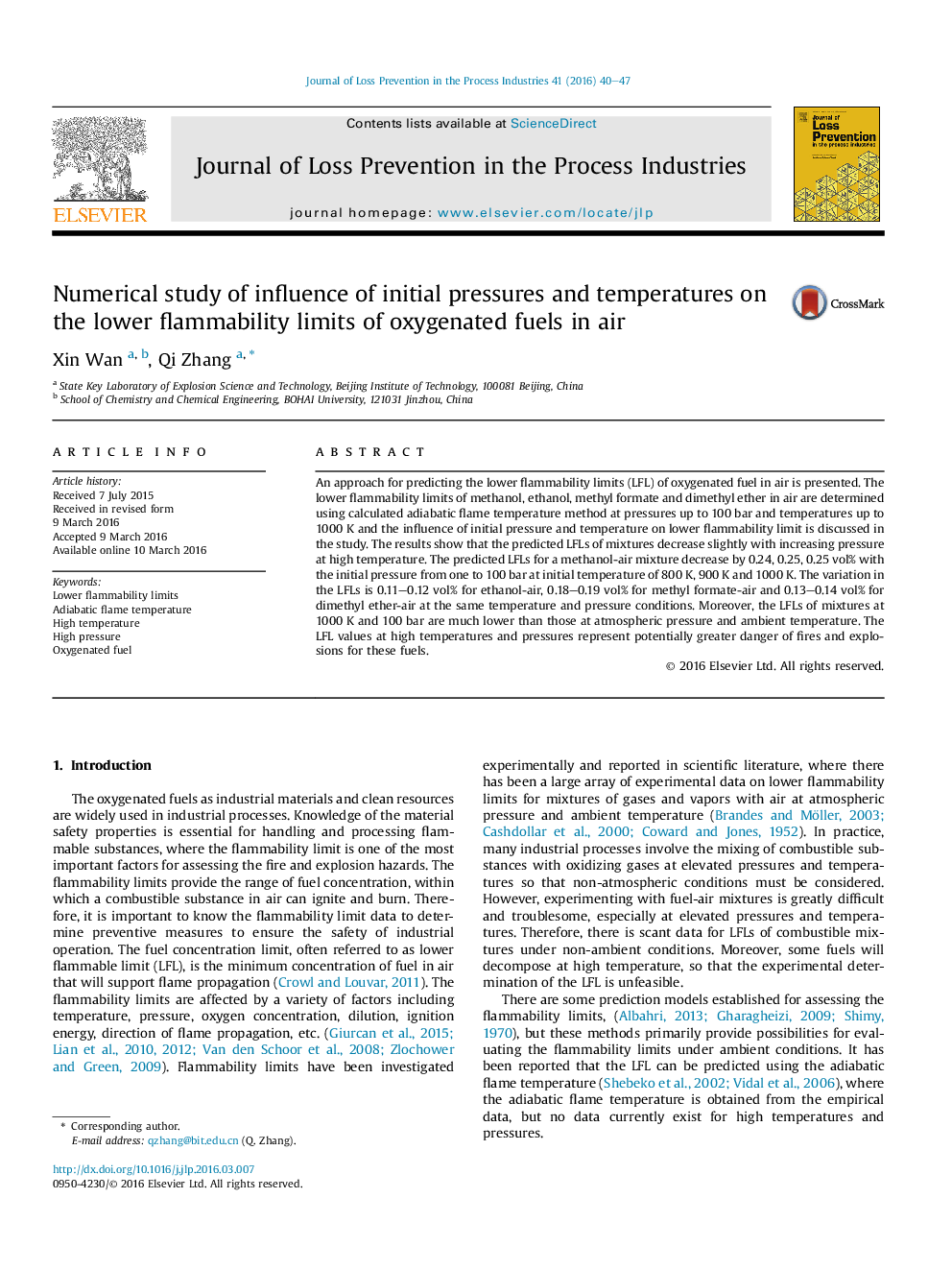| Article ID | Journal | Published Year | Pages | File Type |
|---|---|---|---|---|
| 586042 | Journal of Loss Prevention in the Process Industries | 2016 | 8 Pages |
•An approach for predicting the lower flammability limits of oxygenated fuels in air is presented.•The influence of initial pressures and temperatures on lower flammability limits is studied.•The LFL values decrease with the increasing pressures at high temperatures.•The LFL at high temperature and pressure is much lower than that at ambient temperature and pressure.
An approach for predicting the lower flammability limits (LFL) of oxygenated fuel in air is presented. The lower flammability limits of methanol, ethanol, methyl formate and dimethyl ether in air are determined using calculated adiabatic flame temperature method at pressures up to 100 bar and temperatures up to 1000 K and the influence of initial pressure and temperature on lower flammability limit is discussed in the study. The results show that the predicted LFLs of mixtures decrease slightly with increasing pressure at high temperature. The predicted LFLs for a methanol-air mixture decrease by 0.24, 0.25, 0.25 vol% with the initial pressure from one to 100 bar at initial temperature of 800 K, 900 K and 1000 K. The variation in the LFLs is 0.11–0.12 vol% for ethanol-air, 0.18–0.19 vol% for methyl formate-air and 0.13–0.14 vol% for dimethyl ether-air at the same temperature and pressure conditions. Moreover, the LFLs of mixtures at 1000 K and 100 bar are much lower than those at atmospheric pressure and ambient temperature. The LFL values at high temperatures and pressures represent potentially greater danger of fires and explosions for these fuels.
